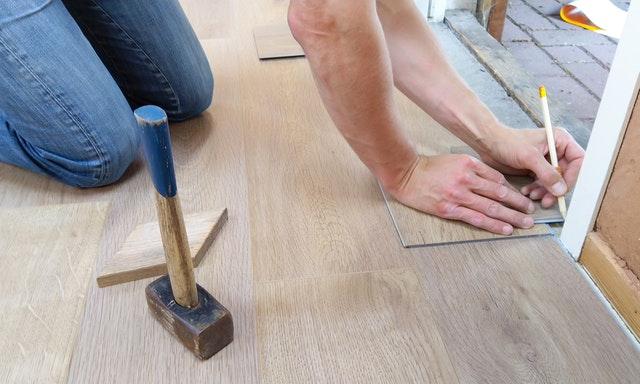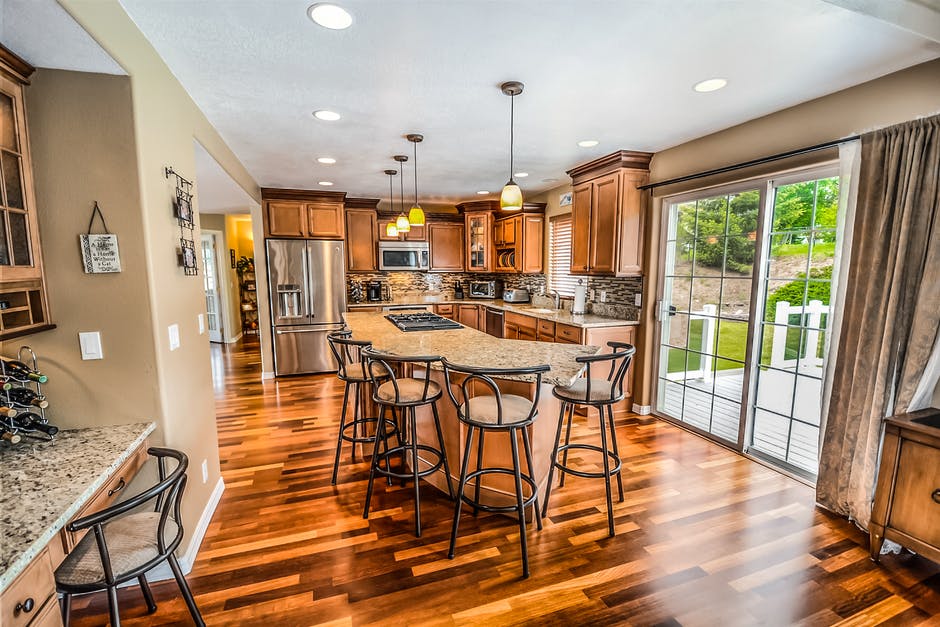Are you looking to renovate your home? Or maybe you’re planning to sell it next year? As you’re inspecting your house, you stumble a bit. As you look down, you notice a huge gap in your flooring. Damaged floors are nothing new for homeowners. Sooner or later, they will happen, prompting you to scramble for floor repair.
On average, Americans spend about $351 repairing wood, tile, or vinyl flooring. And we’re not yet even talking about the potential structural repairs.
But with so many types of flooring, how do you go about fixing your damaged flooring? Do you know how to fix water damage on floorboards and the like?
If not, then we invite you to continue reading below for a lowdown on repairing damaged floors.
Scratches
Let’s begin our discussion on damaged floors by taking a look at scratches. Scratches are one of the most common flooring problems out there. Thankfully, you can address some of these scratches, depending on their severity.
For minor scratches, you can buff them away. To do this, you need to do some hand-sanding. Make sure to use very fine sandpaper grits.
Alternatively, you can also use steel wool. When sanding, make sure to work only on the scratched area. While sanding and buffing, make sure to do them in line with the grain of the wood.
Cracked or Split Flooring
If you use hardwood, comes a time when your flooring starts to develop small cracks and splits. Thankfully, you don’t need to replace your flooring altogether. You can repair them with some angled nails.
Use the nails to secure the two pieces together. Thereafter, apply some wood putty to cover any blemishes.
For large cracks, you may need to do some refinishing. A good option for floor finishing is polyurethane. It offers remarkable protection and helps prolong the life of your flooring.
The downside with polyurethane finishes, however, is they are quite difficult to sand.
But what if the crack is extensive? Then it is best to replace the entire plank altogether.
Cupped Floors
Cupped floors or washboarding pertains to the edges of the hardwood planks that gradually rise. This also involves the center of the wood board sinking, forming a cup-like look.
Washboarding is a result of moisture imbalance. This imbalance occurs when there is more water on the underside of the plank compared to the top part.
To resolve this, you need to regulate indoor humidity. Balance the humidity inside your home and allow the surface to normalize. As soon as your flooring stabilizes, you can start sanding it until it flattens.
Furthermore, consider giving it a round of refinishing to complete that brand new look.

Warping and Buckling Floors
Another problem for hardwood flooring that needs immediate attention is warping or sagging. Like cupped floors, warping is also a result of moisture. At the same time, warping on your floor can also be a sign of possible water damage in your house.
Sometimes, faulty installation can also cause warping, though this rarely happens. To address this, you need to find the root of the moisture.
Meanwhile, buckling happens when the boards begin to warp and lift from the sub-floor. Like warping, you need to find the root of the buckling to address the problem. This can be tricky, so it is best to call a professional hardwood floor installer to get to the root of the matter.
Also, click on the link to learn more about dealing with water damage to floors.
Plank Gaps
Gaps in the planks are another common and annoying problem in hardwood flooring. The hard truth about these gaps is that they do happen as your flooring ages. As the wood ages, it dries up and shrinks.
Once humidity enters, the wood then expands. Thereafter, it dries up again. This back-and-forth process of contraction and expansion is what causes the gaps.
If the gaps become more persistent, you should call a professional to help tighten and align your flooring.
The Types of Flooring: Hardwood
As we mentioned earlier, there are cases where your flooring is beyond saving. These instances force you to replace your flooring altogether. When it comes to floor replacements, hardwood is one of the most popular choices.
One of its key drivers for its popularity is its look. Hardwood looks elegant. It also offers flexibility. You can use it in your kitchen, dining room, or living room. However, it is not advisable for areas that have heavy foot traffic.
Another advantage of hardwood flooring is an easy installation. However, it requires some regular maintenance on your part. You need to put some polyurethane finishing to keep it looking sharp.
Ceramic or Porcelain Tiles
As for areas with high levels of foot traffic, ceramic or porcelain tiles are some of your best options. These two are perfect for your kitchen, entryways, laundry rooms, and mudrooms. This is because they are topnotch when it comes to durability.
Furthermore, they also offer a level of versatility in terms of styles and colors. Also, you can find tile flooring that will not bust your wallet.
Vinyl and Linoleum
Meanwhile, you can say goodbye to warping and buckling by using vinyl and linoleum floors. These two are some of the most resilient options, thanks to their moisture-resistant nature.
Also, they are easy to install. They also come in the form of planks, sheets, and tiles. When it comes to the main difference between the two, vinyl uses acrylic or PVC as its main component.
Linoleum, on the other hand, features natural materials. These include cork, linseed oil, and jute. If you’re big on eco-friendly solutions, linoleum flooring is your best bet.
Laminate Flooring
If you are on a tight budget, laminate flooring is an excellent alternative to hardwood. It features a combination of resin and wood pulp as its key materials. It can also capture the look of real wood to a certain extent.
The caveat with laminate is that you cannot repair it once it sustains damage.
Work on Your Damaged Floors and Beyond
Understanding damaged floors will help you make better decisions in addressing the problem. You can also save more money and increase your home’s value by picking the best replacement floors. But there is more to home improvement than repairing damaged floors.
Check out our different articles on improving your home, damaged floors repair. We discuss topics and solutions that will turn your abode into a better and safer one.








